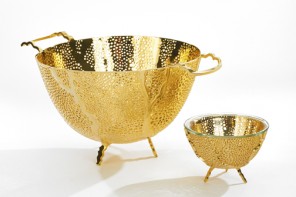In the last 25 years, the Chinese fashion industry has witnessed an unprecedented development. Since President Deng Xiaping’s gaige kaifang (“reform and opening up”) in 1978, China has produced a host of excellent works by contemporary designers like Huishan Zhang and Christopher Bu, who have helped open the market to the outside world, making a bold appearance on the world stage. As a result, Chinese fashion is hot, hot, hot. Witness “Fashion China” (Thames & Hudson), the first major illustrated book on the contemporary scene there, and even the recent Metropolitan Museum of Art blockbuster “China: Through the Looking Glass,” which considered the effect of Chinese culture on Western fashion.
But Chinese “fashion” actually began 5,000 years ago with millions of hard-working silkworms and skilled women. Today’s out-of-the-box stylists are using amazing variations of the silk and brocades discovered in 3000 B.C. by Leizu, the legendary Silk Goddess and wife of the Yellow Emperor, creating works that respect the profundity of their heritage while reflecting the spirit of their times. And while global communications and the global economy have enabled China to explode on the international scene, Chinese fashion has been evolving since ancient times, traveling to other parts of the world via the Silk Road.
It all began then with silk. There are many legends about its discovery. The one I like best relates how silk was detected by a lucky coincidence. Leizu, No. 1 wife of the legendary Yellow Emperor, was sipping tea under a mulberry tree in her garden when a stray cocoon splashed into her steaming jasmine tea. Oops. Lo and behold, it began to unravel itself into shimmering, tea-tinted threads. Entranced, she plucked it out, wound the silken strands around her finger and pulled out a filament about 3,000 feet long. Before long her ladies-in-waiting, working day and night, gathered thousands of cocoons and tossed them into boiling water to unravel the threads which they skillfully wove into radiant silken cloth. They created a fabulous robe for Leizu from about 2,500 cocoons. The miraculous fiber soon became a status symbol of royalty, so precious that it was kept a Chinese secret, under penalty of death, for almost 3,500 years. It was not until 440 A.D. that the secret leaked out due to the vanity of a Chinese princess who married a prince in a Central Asian Kingdom. The princess desired silken robes so she hid some silkworm eggs and mulberry seeds in her headdress and smuggled them by camel caravan along the Silk Road to now-defunct kingdom of Khotan.
In 550 A.D., two Buddhist monks secreted some eggs and cocoons in hollow bamboo staves and rustled them into India where the famous golden Banares silk was born. Eventually, the art spread to the West. Paper made from the bark of the same mulberry trees that nourished silkworms also came to Western regions along the Silk Road. Silk sparked the main trade along all the routes and brought ancient civilizations together. And to think it all began with a bountiful mulberry tree, hard-working silkworms and craftswomen and their brilliant empress. There must be a message here. Perhaps it can be found in the words of Sinologist and historian Johan Eital (1892):
“The Chinese see a golden silk thread of spiritual life running through every form of existence and binding together, as in one living body, everything that subsists in heaven above and in the earth below.”
This has become even clearer in our 21st century world as financial markets, trade flows, pandemics, wars, refugees, migrations and climate change tether us — just as love will inevitably tie us all together with a silken thread.




